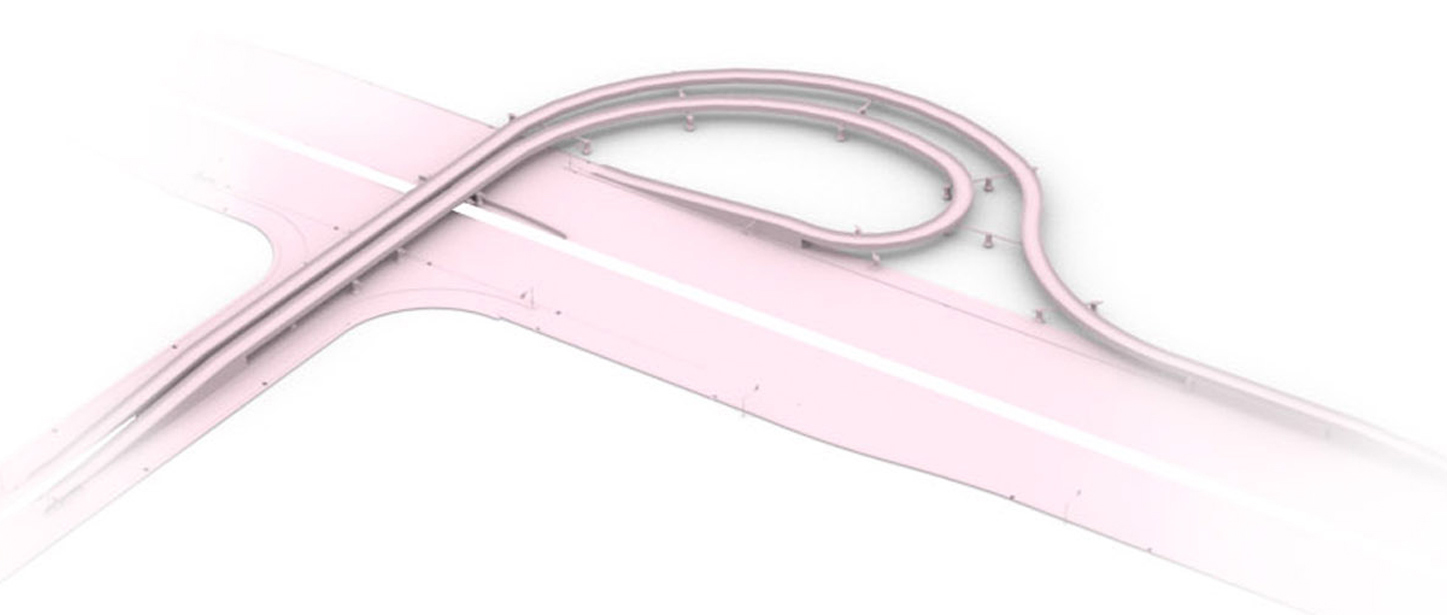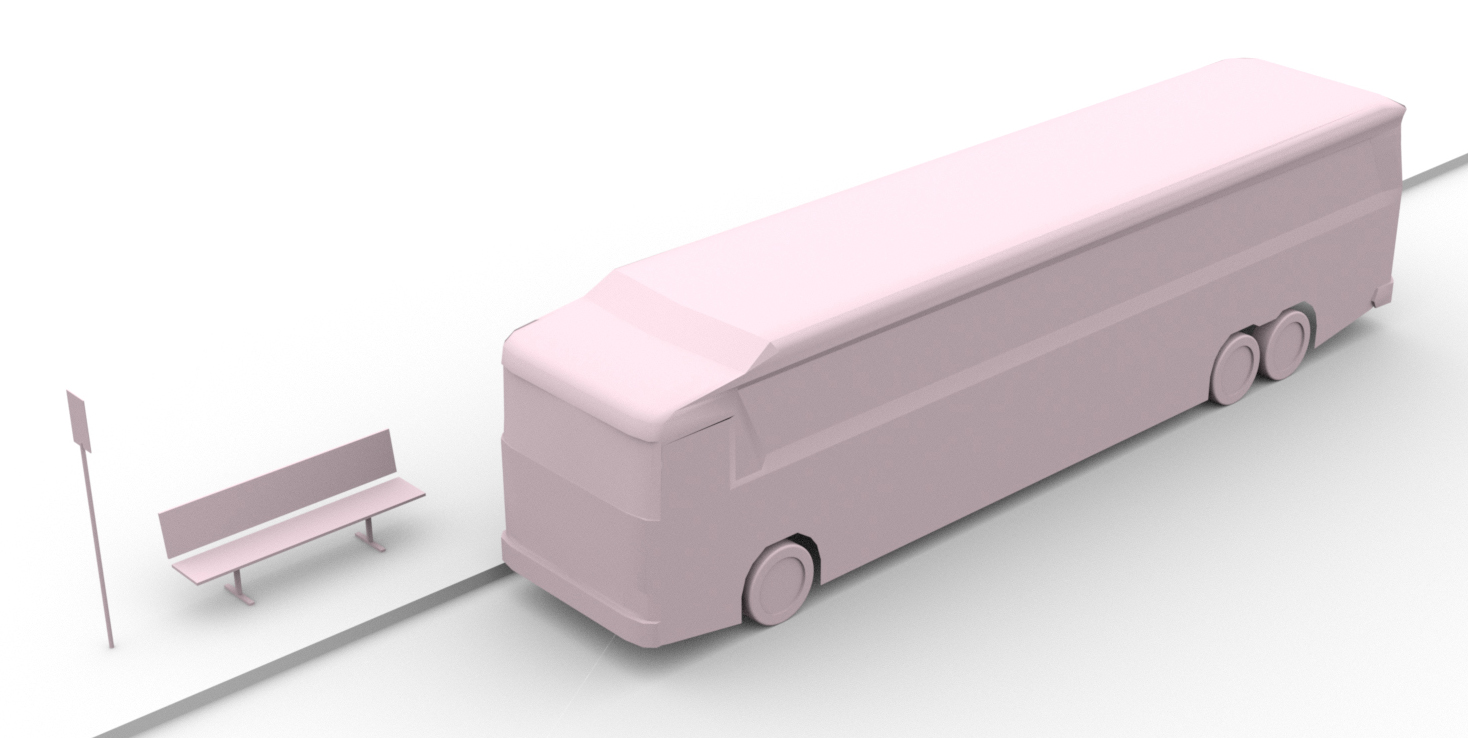Transportation

Transportation means moving objects or people from one location to another.
A transportation facility is an urban object designated to facilitating the movement of people, cattle, animals and goods from one location to another. Transportation is facilitated by transport infrastructure.
Contents
Description
Transportation is divided into private and public transport. An important distinction in the type of transport is mode of transport. In an urban context, the most relevant modes of transport will typically operate under the following transportation objects:
| Transportation network object type | Description | Icon |
|---|---|---|
| Road network | A series of roads connecting the constituents parts of the urban environment and its surrounding hinterland, and urban areas with the wider region and country. The road network consists of a range of different hierarchical standards of road (e.g. single street, dual carriageway, highway/motorway, etc). | |
| Rail network | The rail network consists of the infrastructure connecting population nodes through a series of rail corridors. The rail network facilitates public transportation services, including train, metro and tram services. | |
| Hubs | A transport hub is a connection point in the wider transport network where the public can change transport modes. Hubs include stations |
Transport is important since it enables trade between peoples, which in turn establishes civilizations.
Transport plays an important part in economic growth and globalization, but most types cause air pollution and use large amounts of land. Good planning of transport is essential to make traffic flow, and restrain urban sprawl.
However, transportation is generally very vulnerable for security threats. It is an attractive target because of its importance in society and the presence of large amounts of people or crowds.
Functions
Social
High quality transport links ensure that communities can access basic services, facilities and employment opportunities. The connectivity provided by such links promotes social inclusion, can reduce social isolation and ultimately enhance quality of life.
To be implemtented: THE MOBILITY GAP: "people's mobility and transport demands depend on the socio-economic situation (the higher the income, the higher the mobility). this may give rise to substantial mobility gaps, resulting in low-income groups that are depending on public transport to be able to reach jobs that are often not in the vicinity of low-income residential areas. (JP)
From the social point of view, vulnerability assessment and deriving of resilience requirements for urban planning is a complex process in the case of transportation infrastructure. This is so because common indicators point into different directions based on the following checklists:
- List of indicators for assessment of subjective protection requirements of critical infrastructure
- Types of impact of critical infrastucture failure on citizens and society and needs to protect it
- Societal aspects of failure of critical services
For example, citizens can perceive direct benefit of transportation infrastructure, which should increase felt risks to urban infrastructure and needs to protect. However, transportation is an infrastructure that allows to considerable extent for perception of own capability to control the infrastructure. This should decrease citizens’ felt risks to that infrastructure and needs to protect, including reduced acceptance levels for security-enhancing measures in urban planning. At the same time, the high degree of exposure to transportation infrastructure should again increases citizens’ felt risks to urban infrastructure and needs to protect, as well as felt individual dependence on transportation infrastructure. This makes is important to involve citizens in related urban-object risk assessment. VITRUV identified a set of practical methods for such citizen participation.
Economic
Transportation is a crucial component of every economy since it enables the transport of resources from one location to the other, enabling people and societies as a whole to produce welfare. Transported resources can range from material objects such as natural resources and manufactured products to labour, knowledge and skills in the form of people.[1]. Efficient transport systems provide economic and social benefits such as a better accessibility to markets, employment, knowledge (schools) and investors. These benefits are the result of a reduction in transportation costs and lead to direct economic impacts which can be measured in terms of employment, added value, investment costs, etc. Note, however, that these transportation costs are not just the result of physical infrastructure such as roads and airports, but also of many other different kind of obstacles such as tariffs, language and culture barriers[2]. The economic impact of transportation extends in most cases beyond these direct effects due to the further rounds of economic activity as a result of the transportation of goods, the so-called indirect economic effects. Transportation, however, also has a social and an environmental impact, which is not in all cases positive. Congestion, traffic accidents, environmental pollution and land consumption are well-known examples of these social or external effects of transportation.
The economic impact of transportation can be assessed from both a macroeconomic perspective and a microeconomic perspective[3]with the help of economic tools such as the social cost-benefit analysis in case investments in transportation have to be appraised. At the microeconomic level, transportation is linked to the costs of transportation for individual agents, while at a macroeconomic level the importance of transportation for an economy as a whole is assessed[4]. The economic impact of transportation is directly linked to the location of an urban object/environment. Locations with low levels of accessibility such as cities surrounded by mountains, tend to have higher costs for many goods and services, limiting the welfare of individuals and society.
In general, security threats will have a negative effect on the mobility of individuals, and in extreme cases on the mobility of a society as whole. As a result, the positive economic impact of an efficient transportation system will be partly reversed (the economic impact of security threats). Security measures such as directing traffic flows and access control, can reduce these negative impacts, but can also have a negative impact on the efficiency of transportation networks, also referred to as the economic impact of security measures.
Mobility
Mobility enables transportation. It is obvious that mobility is very important for the daily life of humans and as such, the continuity of the traffic should be guaranteed. Mobility is fundamental to economic and social activities. More information can be found on the mobility page.
Safety
Specific safety issues in transportation objects, concerns traffic safety.
Security Issues
Security issues associated with transportation objects, are related with the fact that it can be an attractive object for fanatics. This is related with the fact that many transportation objects government assets have public access areas with a high volume of transiting people and with the public attention an attack to a public transportation node will draw. Also, transportation nodes are places with crowds and distracted people, often with valuable luggage. This makes these kinds of urban objects vulnerable for the following security issues:
Measures
The measures for each type of security issue can be found on the respective pages. There are few measures they are specifically suited or unsuited to this kind of urban object, but some general considerations can be mentioned:
- Transportation objects in general know a very high transitory flow. This makes entry/exit control of visitors often very difficult or even impossible. Airports, which do feature entrance/exit control, can afford to do so due to the relative long boarding times (hours instead of minutes for a metro or bus), and the relative high travel costs (hundreds of euros instead of a few euros per passenger).
Footnotes and references
- ↑ NPTEL (2007). Chapter 3. Role of Transportation in Society.
- ↑ Brakman, S., H. Garretsen and C. van Marrewijk (2001). An introduction to geographical economics.
- ↑ Macroeconomics is the branch of economics dealing with an economy as a whole, rather than individual markets and persons. Microeconomics studies the behaviour of individual households, firms and organisations while dealing with scarcity.
- ↑ J.P. Rodrique & T. Notteboom (2013). The Geography of Transport Systems. 3rd Edition.


